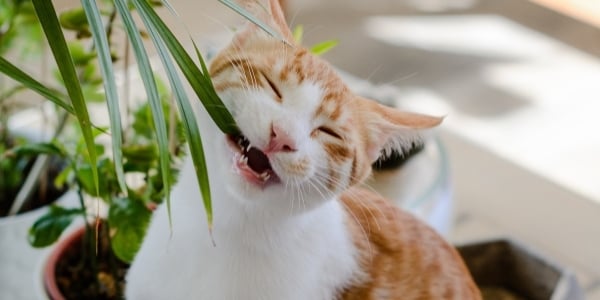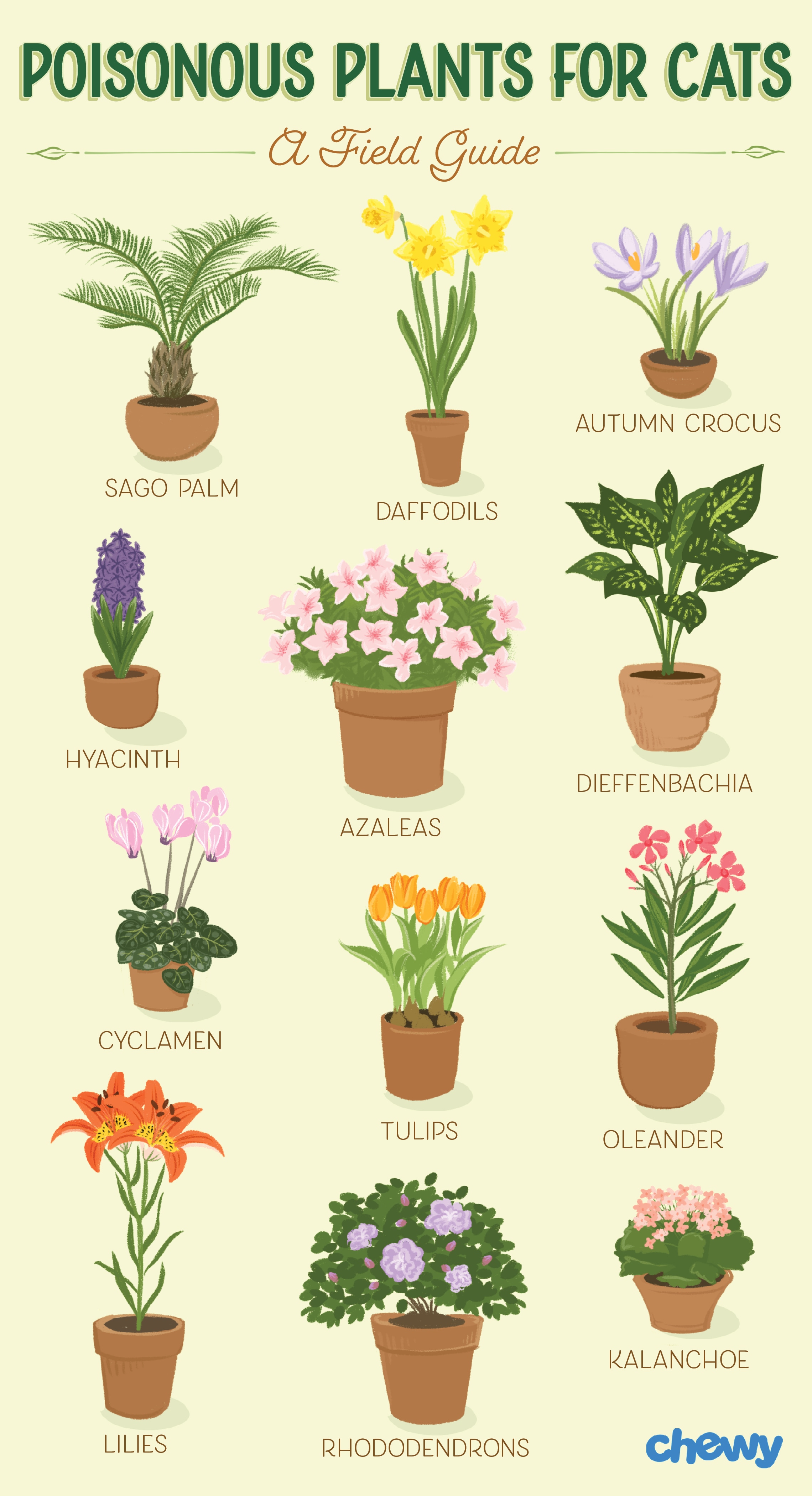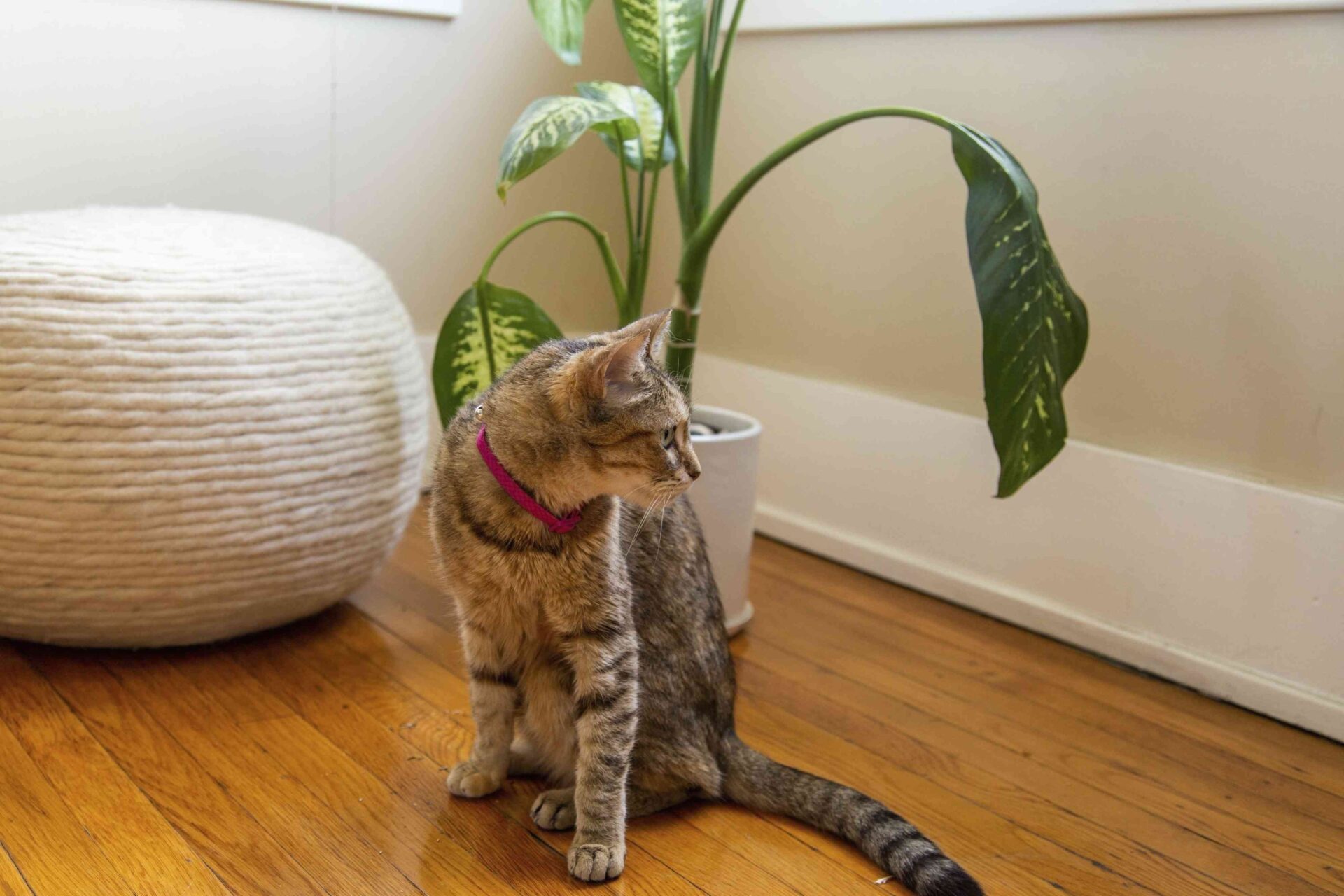Lilies, poinsettias, and philodendrons are poisonous to cats. Ingesting these plants can cause serious health issues or even death.
House plants can brighten up any living space, but cat owners must be cautious. Many common house plants are toxic to cats. Lilies, for example, are highly dangerous and can cause kidney failure. Poinsettias, often seen during the holidays, can irritate a cat’s mouth and stomach.
Philodendrons can lead to severe mouth irritation and swelling. Knowing which plants are harmful helps keep your feline friends safe. Always research before bringing new plants into your home. Ensuring a cat-friendly environment is crucial for their health and well-being. Prioritize your pet’s safety by choosing non-toxic plants.
Common Poisonous Plants
Many house plants can be harmful to cats. Some plants can cause severe reactions. It is essential to know which plants are dangerous. Here are some common poisonous plants:
Lilies
Lilies are very toxic to cats. Even a small amount can cause kidney failure. All parts of the plant are dangerous. Symptoms include vomiting, lethargy, and loss of appetite. Immediate veterinary care is necessary if ingested.
Aloe Vera
Aloe Vera is popular for its healing properties. But it is harmful to cats. Ingesting Aloe Vera can cause vomiting and diarrhea. Other symptoms include lethargy and tremors. Keep this plant out of reach from your pets.
Sago Palm
The Sago Palm is very toxic to cats. All parts are dangerous, especially the seeds. Ingestion can lead to liver failure and death. Symptoms include vomiting, diarrhea, and seizures. Seek immediate veterinary help if your cat ingests Sago Palm.
| Plant | Symptoms |
|---|---|
| Lilies | Vomiting, lethargy, loss of appetite |
| Aloe Vera | Vomiting, diarrhea, lethargy, tremors |
| Sago Palm | Vomiting, diarrhea, seizures, liver failure |

Credit: www.pinterest.com
Symptoms Of Poisoning
Understanding the symptoms of plant poisoning in cats is vital. Early detection can save your furry friend’s life. Here are the main symptoms to watch for if your cat ingests a toxic plant.
Gastrointestinal Issues
Common gastrointestinal symptoms include vomiting and diarrhea. Your cat may lose appetite and become lethargic. Drooling and excessive thirst are also red flags.
| Symptom | Description |
|---|---|
| Vomiting | Frequent and severe |
| Diarrhea | Watery and persistent |
| Loss of Appetite | Refusal to eat |
| Drooling | Excessive saliva production |
Neurological Symptoms
Neurological symptoms can be more frightening. Your cat might suffer from tremors or seizures. Disorientation and lack of coordination are other signs. In severe cases, coma can occur.
- Tremors: Uncontrolled shaking
- Seizures: Convulsions and spasms
- Disorientation: Confusion and lack of focus
- Coma: Unconscious and unresponsive
Respiratory Problems
Respiratory issues are critical symptoms. Your cat may have difficulty breathing. Wheezing and coughing are common signs. Increased heart rate and pale gums are also indicators.
- Difficulty Breathing: Labored or rapid breaths
- Wheezing: High-pitched sounds during breathing
- Coughing: Persistent and severe
- Increased Heart Rate: Rapid heartbeat
- Pale Gums: Lack of color in gums
Recognizing these symptoms early can help save your cat’s life. If you notice any of these signs, seek veterinary care immediately.
Immediate Actions
If your cat has ingested a poisonous house plant, you need to act fast. Taking immediate steps can save your cat’s life. Here’s what to do right away:
Remove Plant
First, remove the plant from your cat’s reach. This prevents further ingestion. Place the plant in a secure location. Make sure your cat cannot access it again.
Contact Veterinarian
Next, call your veterinarian immediately. Describe the plant your cat ingested. Mention any symptoms your cat is showing. Follow your vet’s instructions carefully. They may advise you to bring your cat in for treatment.
Provide Fresh Water
Offer fresh water to your cat. This helps dilute any toxins. Encourage your cat to drink. Do not force your cat to drink if it resists. Just ensure water is available.
| Symptom | Action |
|---|---|
| Vomiting | Remove food and provide water. |
| Diarrhea | Keep your cat hydrated. |
| Lethargy | Contact your vet immediately. |
- Common Poisonous Plants
- Lilies
- Aloe Vera
- Ivy
- Steps to Take
- Remove the plant.
- Contact your vet.
- Provide fresh water.

Credit: www.preventivevet.com
Safe Alternatives
Many house plants are harmful to cats. Pet owners must choose plants carefully. There are many safe alternatives that are beautiful and non-toxic. Below are some great options for cat-friendly homes.
Spider Plant
The Spider Plant is a popular choice for homes with cats. It is non-toxic and easy to care for. Its long, arching leaves make it visually appealing. This plant thrives in indirect sunlight and needs watering once a week. Keep it out of direct sunlight to prevent leaf burn.
Areca Palm
The Areca Palm is another safe option for cat owners. This plant has feathery fronds and adds a tropical touch to any room. It prefers bright, indirect light and needs watering every few days. Ensure the soil is well-draining to avoid root rot. The Areca Palm also helps improve indoor air quality.
Boston Fern
The Boston Fern is safe and pet-friendly. Its lush, green fronds are beautiful and non-toxic. This plant thrives in a humid environment. Place it in a bathroom or mist it regularly. It prefers indirect light and moist soil. The Boston Fern also acts as a natural air purifier.
| Plant Name | Light Requirements | Watering Frequency | Additional Benefits |
|---|---|---|---|
| Spider Plant | Indirect sunlight | Once a week | Easy to care for |
| Areca Palm | Bright, indirect light | Every few days | Improves air quality |
| Boston Fern | Indirect light | Keep soil moist | Natural air purifier |
- Spider Plant: Non-toxic, easy care, indirect sunlight.
- Areca Palm: Tropical look, bright light, air quality.
- Boston Fern: Lush fronds, humid environment, air purifier.
Preventive Measures
Keeping your cats safe from poisonous house plants is crucial. Implementing preventive measures ensures their well-being. This guide will help you create a safe home environment for your furry friends.
Cat-friendly Spaces
Designate specific areas in your home that are free from toxic plants. Use barriers such as baby gates or closed doors to limit access. Another idea is to use high shelves or hanging planters for your plants.
| Cat-Friendly Areas | Plant-Free Zones |
|---|---|
| Living Room | Bedroom |
| Kitchen | Bathroom |
Plant Placement
Proper plant placement is key to keeping your cats safe. Place poisonous plants out of their reach. High shelves, hanging baskets, and secured outdoor areas work well.
- Use tall plant stands
- Install wall-mounted planters
- Consider using plant terrariums
Training Techniques
Training your cat can prevent them from chewing on plants. Use positive reinforcement to teach them boundaries. Provide alternatives like cat grass or safe chew toys.
- Reward good behavior with treats
- Use a firm “no” for bad behavior
- Offer safe plants as alternatives
Training takes time and patience. Stay consistent and your cat will learn.
Emergency Resources
Knowing which house plants are poisonous to cats is crucial. If your cat ingests a toxic plant, you need immediate help. Here are some emergency resources to have on hand. These can save your cat’s life in a crisis.
Poison Control Hotlines
Poison control hotlines provide urgent advice for pet poisoning cases. Keep these numbers handy:
- ASPCA Animal Poison Control Center: 1-888-426-4435
- Pet Poison Helpline: 1-855-764-7661
Both hotlines offer 24/7 support. They can guide you through initial steps. They may also advise you to visit a vet immediately.
Local Veterinary Clinics
Identify nearby veterinary clinics before an emergency happens. Know their hours and emergency services. Here are some steps to prepare:
- Search for “emergency vet near me” on your phone.
- Save contact details of at least three clinics.
- Visit the clinics to understand their services.
Having this information ready ensures swift action. This can be the difference between life and death.
Online Support Groups
Online support groups can be a helpful resource. They offer advice and share experiences. Some popular platforms include:
- Facebook Groups: Search for “cat health” or “cat poison support”.
- Reddit: Visit subreddits like r/cats and r/Pets.
These communities can provide quick tips. They can also offer emotional support during stressful times.
Always prioritize professional help in emergencies. Use these online resources as supplementary support.
Common Myths
Many cat owners believe various myths about house plants and their pets. These misconceptions can put cats at risk. Let’s debunk some common myths about house plants and cats.
Myth Of Natural Immunity
Some people believe cats have a natural immunity to poisonous plants. This is not true. Cats can suffer severe reactions from toxic plants. For example, lilies can cause kidney failure in cats. A small nibble can be fatal.
Misleading Safe Plant Lists
Many online lists claim certain plants are safe for cats. Not all lists are accurate. Some lists include plants like pothos, which are toxic. Always double-check plant safety with a reliable source.
Assumptions About Small Quantities
Another myth is that small amounts of toxic plants won’t harm cats. Even tiny bites can cause big problems. Symptoms may include vomiting, diarrhea, or worse.
| Myth | Truth |
|---|---|
| Natural Immunity | Cats can react to toxic plants. |
| Safe Plant Lists | Not all lists are accurate. |
| Small Quantities | Even tiny bites can be harmful. |
Always research the plants in your home. Make sure they are safe for your cat. Your cat’s health depends on it.

Credit: be.chewy.com
Frequently Asked Questions
What Houseplant Is Poisonous To Cats?
The peace lily is poisonous to cats. Other toxic houseplants include aloe vera, pothos, and philodendron. Keep these away from pets.
Do Cats Know Not To Eat Poisonous Plants?
Cats do not instinctively know which plants are poisonous. They might chew on toxic plants out of curiosity. Keep harmful plants out of their reach to ensure safety.
What Plants Should You Not Have Around Cats?
Avoid having lilies, azaleas, philodendrons, and poinsettias around cats. These plants are toxic and can harm them. Keep your feline friends safe by choosing non-toxic plants like spider plants or bamboo.
Are Cats Likely To Eat Houseplants?
Yes, cats are likely to eat houseplants. They may chew on plants out of curiosity or boredom. Ensure plants are non-toxic.
Conclusion
Understanding which house plants are poisonous to cats is crucial for pet owners. Always research before bringing new plants home. Safe environments ensure your cat’s well-being. Prioritize non-toxic plant options. By doing so, you create a safer, happier home for your feline friend.
Stay informed and protect your pets.

My mission is to help you bring the beauty of nature indoors with expert advice, detailed plant care guides, and creative design ideas.





Leave a Reply